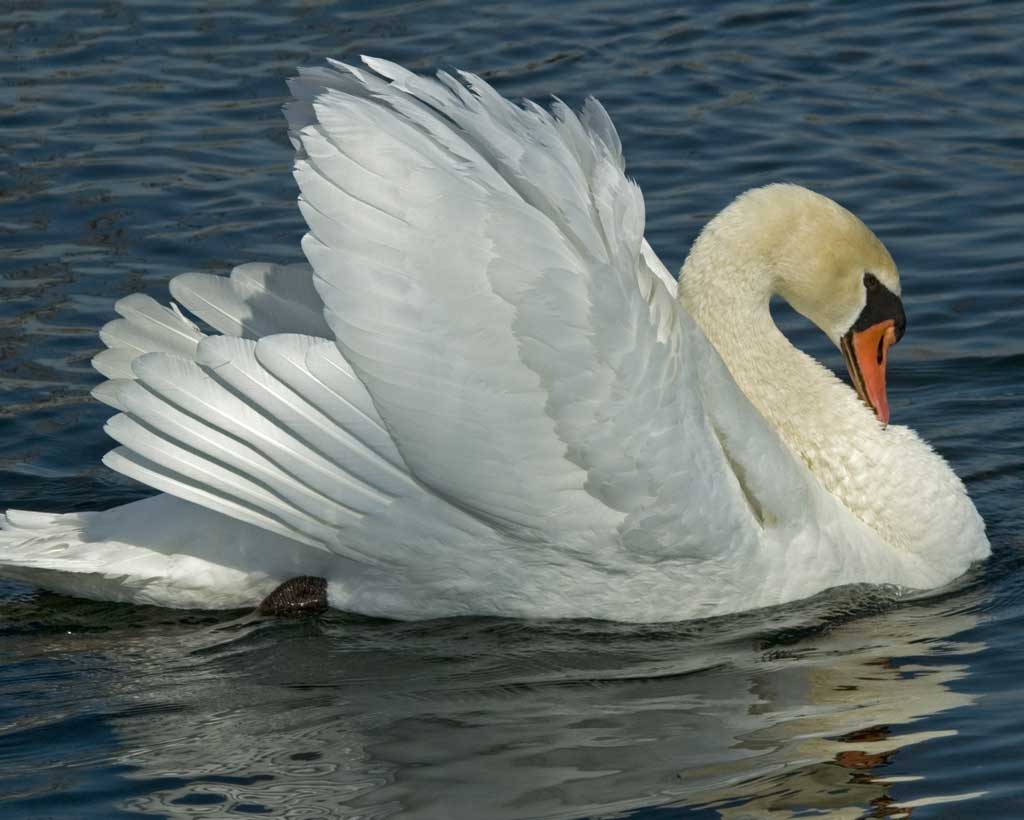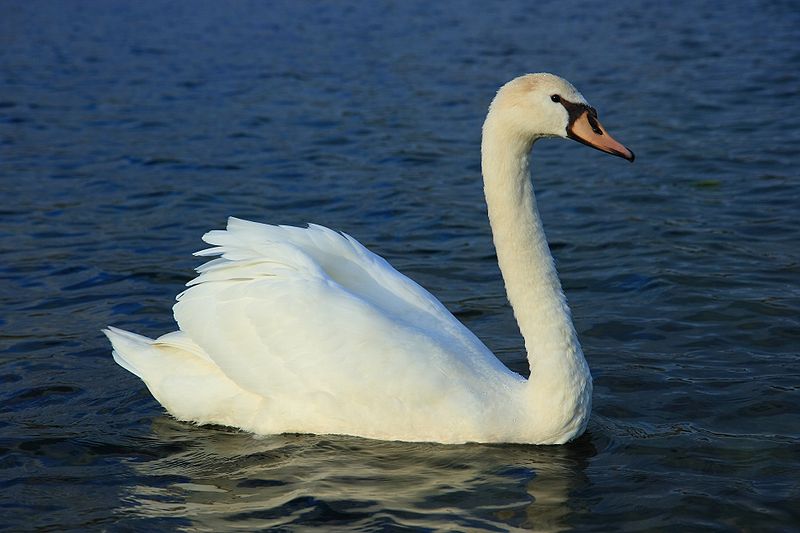
Cygnus olor
SUBFAMILY
Anserinae
TAXONOMY
Anas olor Gmelin, 1789, “Russia, Sibiria, Persico etiam littore
maris Caspii.” Monotypic.
OTHER COMMON NAMES
French: Cygne tuberculй; German: Hцckerschwan; Spanish:
Cisne Vulgar.
PHYSICAL CHARACTERISTICS
49–63 in (125–160 cm); 14.6–33 lb (6.6–15.0 kg). Characteristic
knob on bill.
DISTRIBUTION
Central and northern Europe, locally in Russia and Siberia,
patchily from Turkey to eastern China. Winters in northern
Africa, Black Sea, northwestern India, and Korea. Populations
anywhere else are introduced.
HABITAT
Freshwater marshes, lagoons, and rivers; artificial lakes and
canals.
BEHAVIOR
Territorial. The 11.12 acres (4.5 ha) large territories defended
very aggressively, even by killing other birds. Clap feet on water
and perform rotation displays to advertise their territories.
Migratory.
FEEDING ECOLOGY AND DIET
Feeds mostly on aquatic vegetation, seeds, grasses, small amphibians,
and invertebrates. Dabbles and rarely dives.
REPRODUCTIVE BIOLOGY
Perennially monogamous. Breeds in spring. Nests are large
platforms of vegetation built on floating mats or reeds. Lay
5–7 eggs. Incubation 35–36 days; fledging 120–150 days; become
sexually mature at the earliest during the third year.
CONSERVATION STATUS
Range expanding and abundances increasing.
SIGNIFICANCE TO HUMANS
Symbolizes purity, love, and elegance in many cultures making
it the stuff of myths. Common in parks.
Other popular Animals
Photo Gallery of - Mute swan




 Animalia Life
Animalia Life